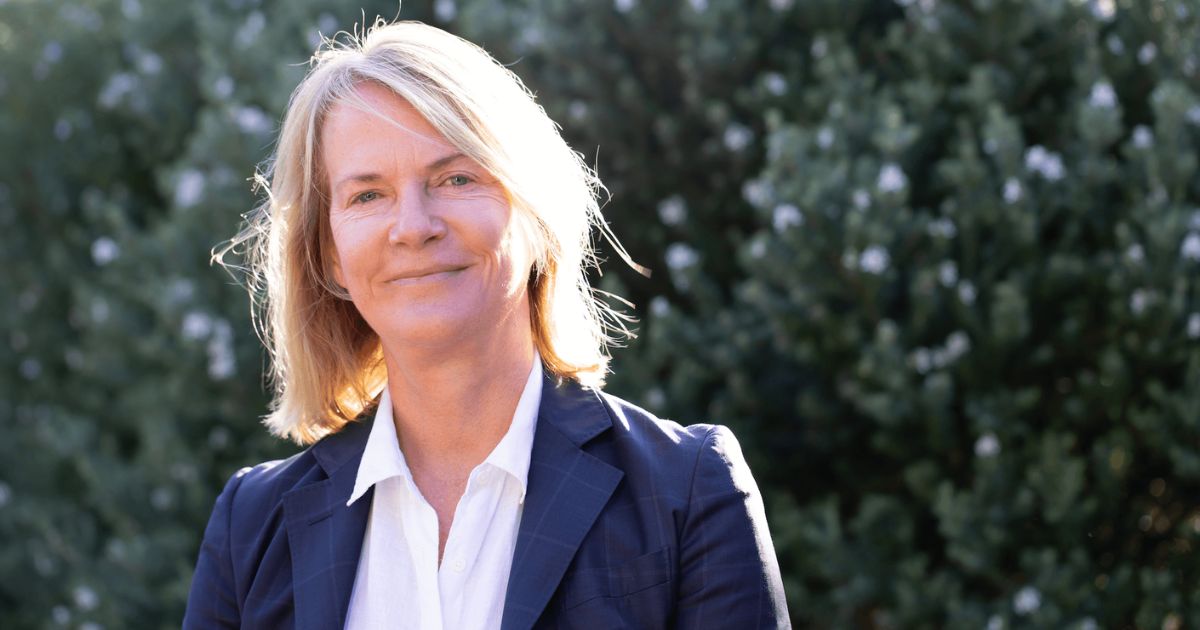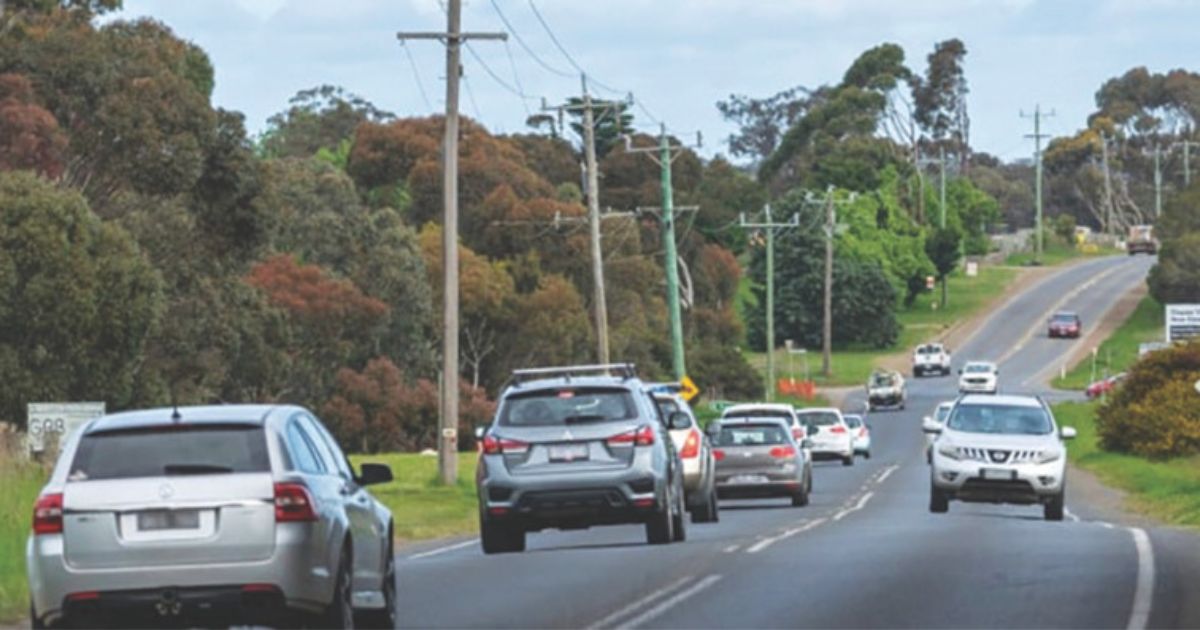Committee for Lorne: Devils, Tigers, and the Land Bridge
At first, it must have been a mere trickle, though soon, a small channel — or several — would have opened. As these ever-widened into rivers, the banks of the land levee would have begun to crumble — like a child’s scooped-out sand basin is breached by an incoming tide. Finally, the influx of the sea would have become a flood, drowning the verdant pastures and creating islands from the higher ground as the Ice Age ended, the polar caps melted, and the sea level inevitably rose. Watching how the St. George River slowly fills and floods with seawater at high tide gives an impression of how it must have been — though clearly on a far grander scale.
Of course, all this took place over millennia and many millennia ago. Before the Ice Age began [see the left panel in the attached diagram], what we now know as Bass Strait was full of seawater — just as it is now. Then, as the Great Ice Age took hold of the planet ~100-120,000 years ago, the polar caps began to lock up vast volumes of water, and the sea receded. As the sea level fell, a land bridge appeared between Australia and New Guinea. At the same time, at our end of the continent, a broad, flat plain — now historically referred to as the Bassian Plain — emerged to link Tasmania to the mainland [see centre panel in white].
Then, some 20,000 years ago when the earth started to warm again, the ice caps began to melt, the sea level rose, and many of the land bridges that had been exposed around the globe by the Ice Age slowly slipped back below the waves. Seawater began to fill the Bassian Plain from the west, forming the Bassian Basin [see right panel]. B y 8,000 years ago, only a narrowing neck of land to the south of Wilson’s Promontory remained to link the two land masses. Finally, the strait returned to its pre-Ice Age state [left panel again], cutting off Tasmania and its inhabitants with only Flinders Island and the Furneaux group still poking their heads above the waterline.
The World Atlas website estimates Bass Strait “… covers about ~6,000 km2 of ancient, submerged dunes, sand waves, and tidal ridges”. Scientists estimate that the sea level is now about 120m higher than it was at its Ice Age nadir, and as the planet continues to warm, it is still rising today. They have calculated that if [or as] the planet warms further, global sea levels will rise by a further 80m, assuming that all the water currently still frozen at the poles, on mountain tops, and in glaciers is released by a total meltdown. As a comparison, my altimeter app records that the base of the Telecom Tower at the top of Teddy’s Lookout is 135m above sea level.
While the land bridge was exposed, our unique marsupial fauna was able to move freely south, though many of the species accustomed to the warmer north were likely discouraged by the colder climate … for example, only three snake species call Tasmania home — the Tiger, Lowland Copperhead, and White-lipped snakes — all uniquely cold-adapted [Tasmanian Snakes: https://nre.tas.gov.au/]. As the sea levels rose and the land bridge was flooded, the aboriginal clans who had followed the plentiful game south found themselves cut off from the continent to the north.
Among other species, two marsupials unique to the island — the Sarcophilus harrissii [the Tasmanian Devil] and the Thylacine cyanocephalus [the Tasmanian Tiger]— thrived on the newly formed but less-populated island. It is estimated that 5,000 Thylacines still roamed the island in the early 1800s, while those on the mainland had been hunted to extinction by predator dingoes and man more than 3,000 years earlier.

Tragically, when European settlers established their sheep industry, the government encouraged Thylacine eradication with a generous bounty and the remnant ‘tigers’ were rapidly exterminated. The last known ‘tiger’ died in captivity in 1932, and the species was declared extinct in 1982. The last mainland devil is thought to have died ~400 years ago, though they still remain numerous in Tasmania. Sadly, most now suffer [or are at risk of] virally transmitted facial tumours transferred during the habitual jaw-biting devils use when socialising and asserting dominance. Protected disease-free populations have been established on Maria Island and the Tasman Peninsula to combat this.
Both species would have roamed the Otway Forest behind Lorne during the time of the land bridges. Indeed, fossilised and non-fossil remains and Aboriginal rock art confirm that the ‘tiger’ range extended to New Guinea while devils were widely spread and abundant.
Imagine gazing south from Teddy’s Lookout — likely one of several ideal places along our now Great Ocean Road coastline to spot game on the undulating and verdant plain stretching away to the south. The Bassian Plain must have appeared similar to the vista of the Western District that currently edges the north-western Otway slopes. On a clear day, King Island might have just been visible in the far distance, 82km to the south from Cape Otway … just as the equidistant Mt Buninyong and Mt Elephant can be easily seen 90km to the north of the ridges above Dean’s Marsh.
Using my altimeter app, I decided to see whether Teddys would become a future island or a peninsula of the mainland … assuming, that is, that the scientific estimate of a sea level rise of 80m is ‘bang on target’.
As I passed the roundabout at the top of Otway Street, the altimeter read 82m but given that the road dips a few metres before ascending George Street, Teddys would be separated from the mainland by a shallow 400m channel with a tiny island [the roundabout and the Gay Street rise] poking up in the middle.
Thus, all whose homes are below that point will need to learn to swim, while beachfront views will grace homes on Teddy Island and the higher reaches of Richardson Boulevard. The golf club will need to transition to a traditional sand-belt links course… like Barwon Heads and Port Fairy.
After that bit of nonsense — though I did have some fun with it — I must hasten to add that should this ever occur, the human species will undoubtedly be long gone. Until then, I will continue to enjoy my ‘sitting rock’ at the mouth of the George and ponder questions like: ‘What if …’.
John Agar
A word from the Chairman
Hello
What an amazing weekend for football, Lorne and Victoria!
An outstanding contest between the two best AFL teams of the year came down to the last 30 seconds before a sell-out crowd of 100,024 at the home of football. It seems a long way from the Covid-induced interstate grand finals of 2020 and 2021 with crowds of 29,707 (2020) and 61,118 (2021).
It is often said that sport is a metaphor for life. It is about preparation, teamwork, commitment and endeavour, the joy of the victors and the anguish of the defeated, but what shone through this year was a coach who moulded a team with composure and focus on values, and a captain who demonstrated passionate leadership and spoke graciously and eloquently after the game, as he had done at this year’s Anzac Day game. This is not to forget the tenacity of the Brisbane team and the personal challenges their coach has faced this year. Well done to both teams.
We joined many locals and visitors at the Anglers to watch the game where the defibrillator was on standby as some of our Lorne Magpie Army urged their team to victory. The swear jar would have been full (if we had one!).
As we admire the leadership and values on display on Saturday, we should reflect on our own community and the commitment and leadership at our own sporting clubs. They play an important role in building and binding our community together. They provide opportunities for all ages and abilities, fostering good sportsmanship, commitment, teamwork and resilience. Whether it is school students learning to tie knots at the Aquatic club, our young and athletic netballers and footballers, or the aching bones of our most senior cricketers, there is something for everyone.
And if active participation is beyond your desire or capability, there are plenty of jobs behind the scenes in management and administration of our clubs. With annual general meetings coming up for our sporting clubs and community organisations, I urge you to consider getting involved. You will find it very rewarding.
The long weekend brought the crowds to Lorne and parking spots and seats in the main street were keenly sought after. It was more like January than September! The parking officers were out in force, booking people illegally parked and, while there may be hard-luck stories and perhaps a lack of discretion by the officers, some of the parking was just plain silly (or lazy).
The warm start to Spring reminds us that another fire season is upon us. Already some areas of our state have experienced fires. It is now time to prepare, to clean up overgrowth and flammable rubbish around our properties, to have our fire plan ready, and to follow good fire prevention practices especially when outdoors.
Cheers
John Higgins Chairman
Lorne Ward Events Calendar –
October
18 Write Your Life Story writing workshop
Iincludes original material and handouts and a light afternoon tea. 1-3pm at Lorne Community House $35
Bookings essential : https://www.trybooking.com/CLBHH
29 Run the Marsh
3km walk, 2km & 5km fun run at 9am Frogwood Arboretum, Deans Marsh.
Register at deansmarsh.org.au
November
4 Lorne Market
9-4pm More info: lornemarkets.com


















